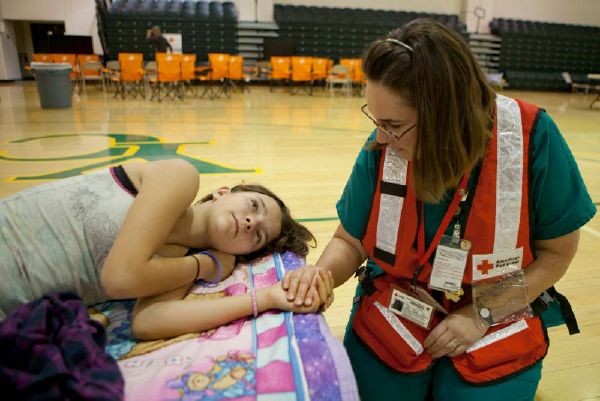
As the United States prepares for the season of disasters, the federal officials now have a new crisis to be worried about-the prevention of "tightly-packed disaster-response shelters" from turning into hotspots of COVID-19 transmission.
Incidentally, this pandemic has forced emergency to reconsider long-held processes for the operation of shelters like these trying times.
This challenge takes place as the crisis-response team of the nation is already strained by years of cruel wildfires, floods, and hurricanes, a trend which the climate change today promises to fast-track.
Assistant professor of emergency management and disaster science, Samantha Montano, from the University of Nebraska, Omaha said that all activities done both during and after the disasters are engagements that need many people to be in close proximity to the people around or near them.
However, the assistant professor said, "It is the exact opposite of what needs to be done" to stay protected from COVID-19 that has infected more than 470,000 and killed over 20,000 people globally.
ALSO READ: Lock-Downs Alone Can Not Defeat COVID-19, Says WHO Expert
Social Distancing Also Encouraged
Although social distancing is currently being practiced in many parts of the world because of the CVOID-19, the Federal Emergency Management Agency has started to encourage to still practice social distances and to restrict to four, the number of victims of the disaster who can be in any of their field offices, anytime.
Additionally, the spokeswoman said, the agency has halted series of pieces of training, at its National Fire Academy and Emergency Management Institute, and all other facilities, as well.
The agency also stated on Thursday, it would allow the States to seek reimbursement, individually for sheltering victims like in hotels, for one.
Nevertheless, in times of disaster, hotels may possibly be damaged and thus unusable, too. Or, simply, they may not be just close enough to address the urgent needs. This then is a major challenge -what to do about the shelters.
Potential Danger of COVID-19 to Relief Shelters
COVID-19 has the potential of turning the relief shelters into dangerous abodes. Because of this, the American Red Cross, the organization that operates the majority of the temporary shelters around the US, introduced a new set of standards for their operations, attempting to limit the risk of transmission.
Part of the guidelines is the screening of each of the evacuees and isolating them if they are seen symptoms. More so, focusing on good hygiene and spacing of beds about six feet apart are also being practiced. The Red Cross officials said, they knew these were not perfect solutions but they could help.
The Red Cross' disaster services senior vice president, Trevor Riggen said, in the middle of the pandemic, "a congregate shelter" is certainly not the most ideal environment, adding, the organization would attempt moving more people into motels or hotels.
However, he added, there weren't sufficient available rooms always, which are close to a disaster, especially if the number of people needing shelter reaches hundreds.
Momentarily, the Red Cross has continued to depend on shelters, only with some changes. Its new guidelines, as indicated in the announcement, would require taking the temperature of every person coming in, whether he is a volunteer or an evacuee.
Every individual coming in would also be checked for other COVID-19 symptoms. Once the person is inside, he is to be checked thrice each day. There would also be hand-washing stations, with enhanced cleaning and disinfecting of all hard surfaces in the area.














